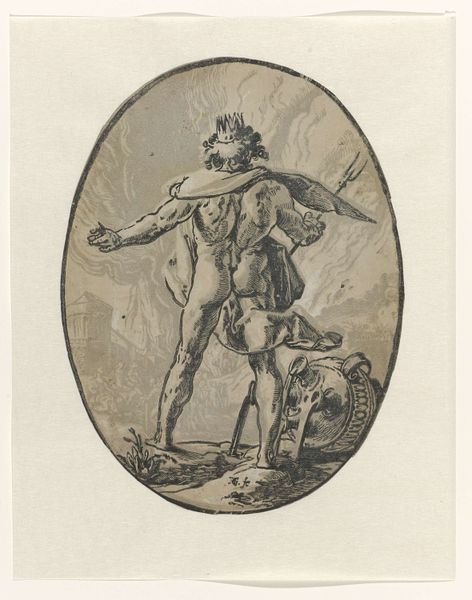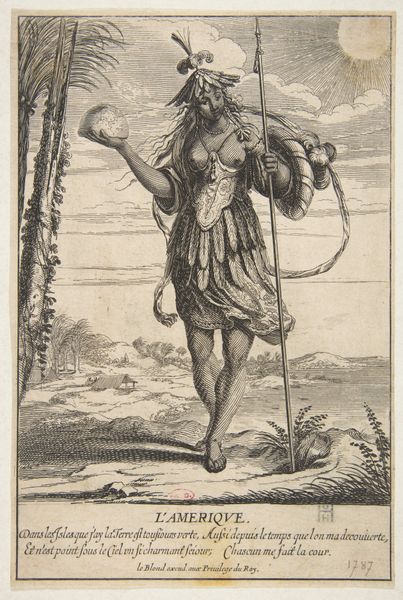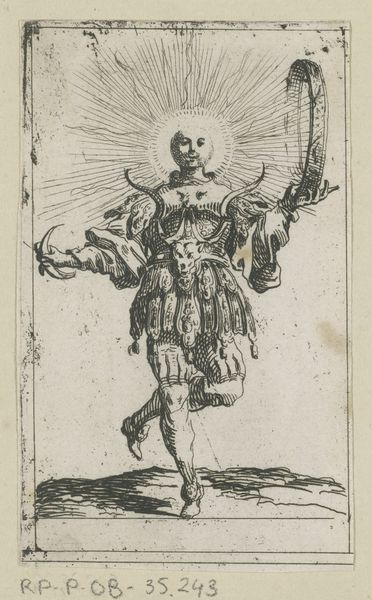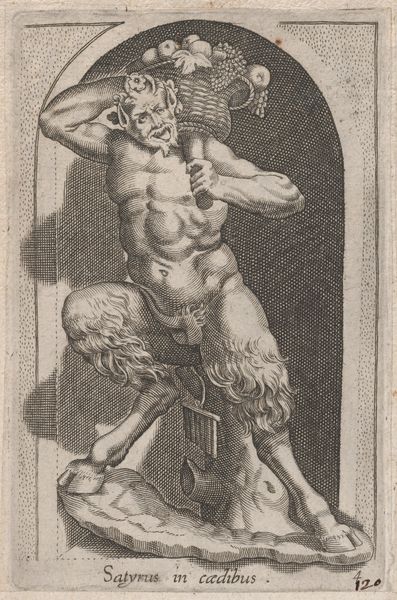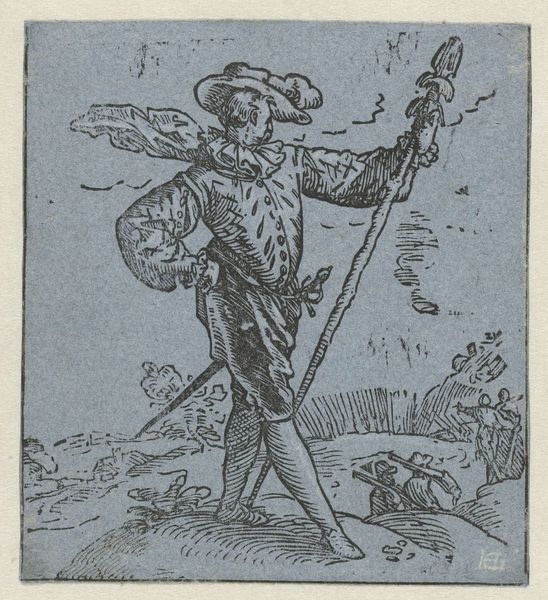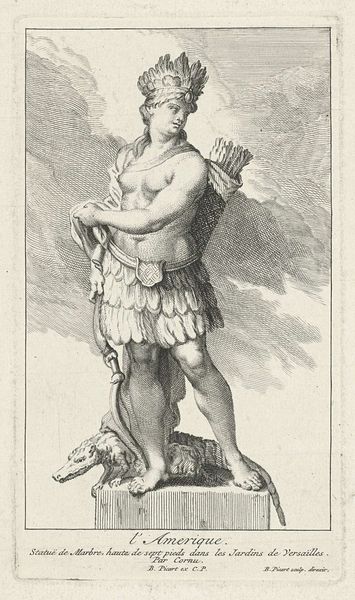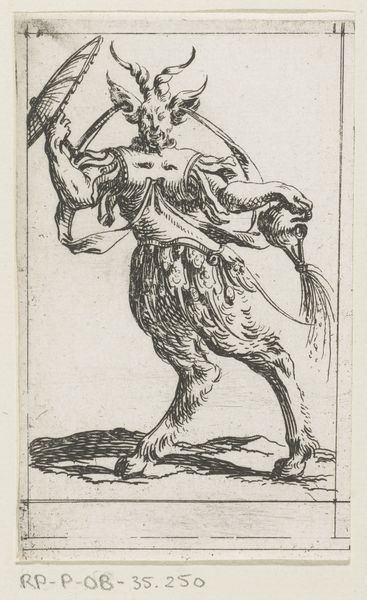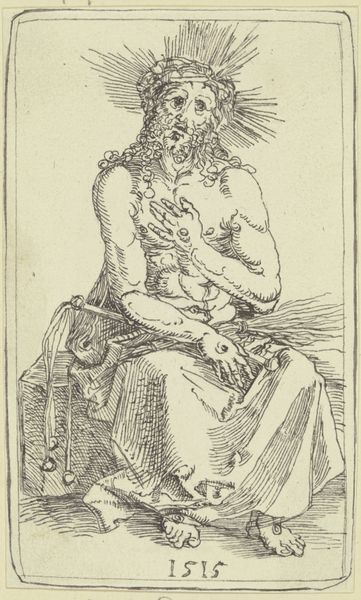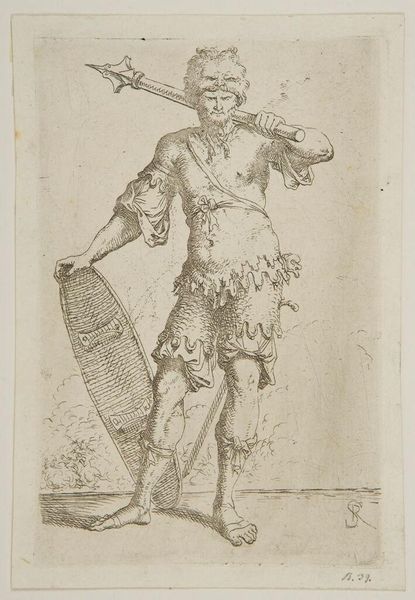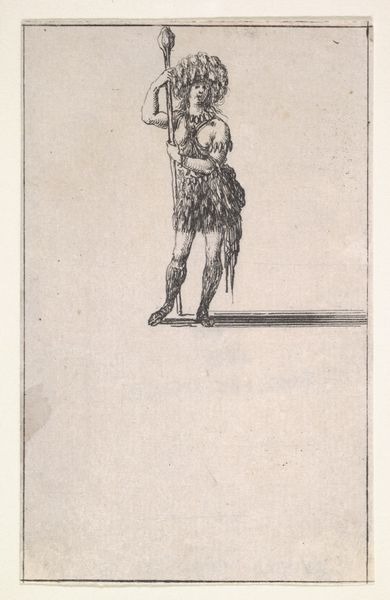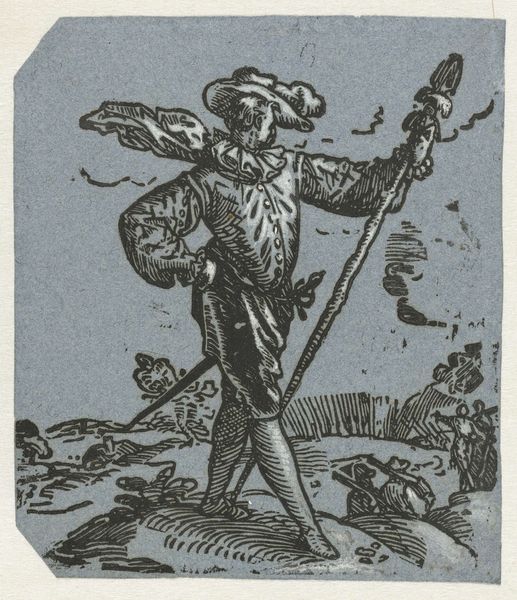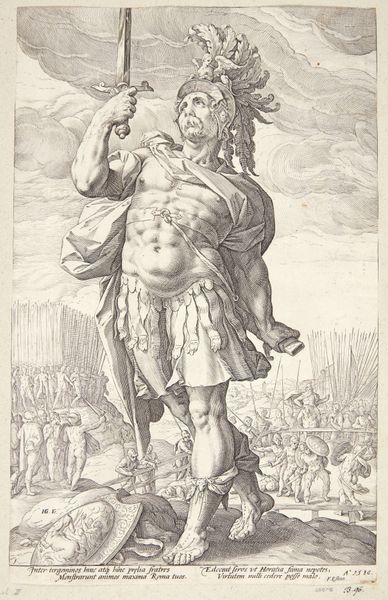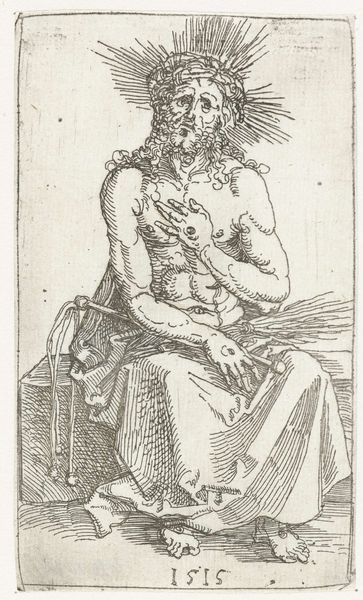
Hab.ts de l'Isle Marquises from playing cards "Jeu d'Or" 18th century
0:00
0:00
drawing, print
#
portrait
#
drawing
#
toned paper
#
childish illustration
# print
#
personal sketchbook
#
coloured pencil
#
illustrative and welcoming
#
men
#
sketchbook drawing
#
watercolour bleed
#
watercolour illustration
#
sketchbook art
#
watercolor
Dimensions: 3 3/16 × 2 1/16 in. (8.1 × 5.3 cm)
Copyright: Public Domain
Editor: This is an 18th-century print titled "Hab.ts de l'Isle Marquises" from playing cards "Jeu d'Or," by an anonymous artist. I'm immediately struck by how it blends observation and imagination in portraying this figure from the Marquesas Islands. What symbolic significance do you see embedded in this image? Curator: It’s fascinating how playing cards became vehicles for circulating ethnographic images. The figure, adorned with feathers and wielding a peculiar object, carries the weight of early European perceptions of the "exotic." The feathers themselves—look at their colours!—are not mere decoration, but potent symbols of status, power, and connection to the spirit world in many cultures. How do these visual cues inform your understanding of cultural exchange, or perhaps, misinterpretations, during this era? Editor: I hadn’t considered the misinterpretations! The strange object he holds looks almost like scales, but out of place. Does this relate to European colonial intentions? Curator: Precisely. What appears "out of place" might reveal anxieties surrounding trade, power dynamics, and attempts to understand foreign societies through a European lens. Consider how the surrounding text interacts with the image: how might the combination create and reinforce colonial narratives? Are these romantic notions of the “noble savage?" Editor: The text, combined with the image, seems to simplify and exoticize the Marquesan culture for a European audience. I can see how the imagery is designed to portray this person as powerful, yet, also subjugated. Curator: Indeed. Cultural memory is encoded into these images. The combination reveals much about the relationship between colonizer and colonized, and how visual culture contributes to this dynamic. Thank you for enriching our reading of it! Editor: Thank you. It’s given me a lot to think about regarding how cultural narratives get embedded and transmitted through everyday objects.
Comments
No comments
Be the first to comment and join the conversation on the ultimate creative platform.
